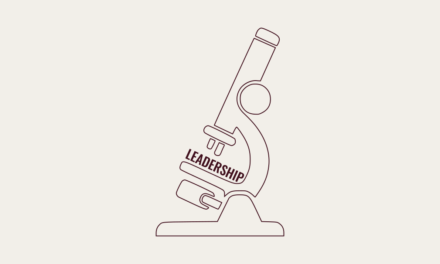Leadership traits are the relatively stable personal characteristics of leaders (what leaders are like), leadership styles are the behavior patterns leaders adopt (what leaders do), and leadership skills reflect the extent to which a leader does something related to leadership well and effectively (how competent and proficient leaders are).
While leadership traits are partially innate, relatively stable, and difficult to change, both leadership styles and leadership skills can be learned and developed.
Although leadership traits, styles, and skills are all important for effective leadership, each one has a unique role in the leadership process – styles are at the forefront of influence; traits are the underlying factors guiding leaders’ thoughts, actions, and feelings; and skills are the talents that are acquired and developed to lead others effectively.
It is essential for leaders and aspiring leaders to understand these differences, in order to embrace their traits and develop their skills and styles accordingly.
Read on to learn more about the differences among leadership traits, styles, and skills.
Table of contents
- Differences in the definitions of leadership traits, styles, and skills
- Differences in the examples of leadership traits, styles, and skills
- Differences in the stability of leadership traits, styles, and skills
- Differences in the effectiveness of leadership traits, styles, and skills
- Differences in the roles of traits, styles, and skills in the leadership process
- Conclusion
- References and further reading
Differences in the definitions of leadership traits, styles, and skills
The definitions of leadership traits, styles, and skills are a great starting point to understand the differences among these leadership concepts.
In a nutshell, while leadership traits reflect personal characteristics, rooted in individual differences, that are relevant for the exercise of leadership; leadership styles represent an array of complementary behaviors that tend to co-occur and that a leader tends to adopt; and leadership skills reflect how well a leader does something related to leadership.
In other words, traits reflect what leaders are, styles emerge in what leaders do, and skills show how well leaders can do their job.
In the sections below we dive deeper into the differences among the definitions of leadership traits, styles, and skills.
Definition of leadership traits
Leadership traits are relatively stable individual attributes that predispose people to seek leadership roles, facilitate the growth and development of specific leadership skills and styles, and foster effectiveness across situations[1].
For example, given that situations requiring leadership typically entail influencing others toward shared goals, the trait of extroversion (being talkative, social, assertive, and energetic) predisposes people to engage in social interactions that may require leadership; facilitates the development of social skills, as people who are engaged socially have more learning opportunities in that domain; and foster effectiveness across situations, as the level of energy of extroverts tends to enthuse followers to follow a certain path and to do more.
Definition of leadership styles
Leadership styles are the patterns of behavior adopted when leaders face situations that require leadership[2]. In essence, leadership styles reflect what leaders tend to do and which behaviors they tend to adopt.
Most leadership styles represent an array of complementary behaviors that tend to co-occur. For example, the empowering leadership style reflects a pattern of complementary behaviors that are supportive of the development and autonomy of followers[3].
When you see someone adopting a leadership style it can be because that person tends to adopt a certain leadership style in most, if not all, situations that require leadership, or because that person masters a certain leadership style and can rely on it when the situation calls for it. In the first case you would say that the person is an empowering leader, for example, and in the second case you would say that the person is adopting an empowering leadership style.
Definition of leadership skills
A leadership skill is the capability to do something related to leadership well and effectively[4a]. It is a talent that is acquired and developed for the exercise of leadership.
In the context of leadership, skills can also be used to describe how well you are using the potential of a trait you have, or how well you master a leadership style.
For example, highly intelligent leaders (a trait) have the potential to solve complex leadership tasks and problems. When leaders capitalize on and fulfill the potential of their intelligence (through developmental opportunities, for example), they become skilled at problem-solving and develop an array of complementary cognitive skills related to leadership.
Likewise, when leaders master all the nuances of a leadership style, they become skilled in that leadership style. For example, transformational leadership entails leading by example, inspiring and stimulating others intellectually, as well as showing individual consideration for each follower[5]. When leaders master these four behaviors and know why, how, and when to use them, they develop transformational leadership skills and can use this leadership style more effectively.
Differences in the examples of leadership traits, styles, and skills
We can further explore the differences among leadership traits, styles, and skills by looking at specific examples of each one. This exercise also has the benefit of turning the abstract definitions we explored earlier into concrete examples the majority of us are, most likely, aware of.
In going through the examples below, keep in mind that you can look at leadership traits, styles, and skills broadly or narrowly.
For example, you can operationalize leadership skills broadly (for example, cognitive skills) or narrowly (for example, problem-solving and divergent thinking). Likewise, you can look at leadership traits broadly (for example, conscientiousness) or narrowly (for example, orderliness and dutifulness, which are the two sub-dimensions of conscientiousness). You can also see multiple layers in leadership styles – for example, self-awareness is expected from authentic leaders, as well as displaying their genuine identity, conducting impartial analysis of all pertinent information, and adhering to personal moral principles and values[6].
Examples of leadership traits
Leadership traits include aspects of personality, cognitive abilities, motives, and values.
Personality traits are a set of relatively stable psychological characteristics that increase the likelihood of behaving in certain ways, having some types of thoughts, and experiencing certain emotions and feelings[7]. Examples of personality traits that are important for leadership are extroversion, conscientiousness, self-confidence, and proactive personality[8a] [9a] [10a] [11a] [12a].
Cognitive abilities are the natural talents people have to deliberately use mental operations to solve problems that do not have an automatic solution[13]. These mental operations include inferring, identifying relationships and patterns, transforming information and creating knowledge, solving complex and unstructured problems, evaluating alternatives, and developing and testing hypotheses. General intelligence and creative ability are examples of cognitive abilities commonly associated with leadership effectiveness[10b] [14a] [15a] [16a].
Motives refer to the desire we have for a certain type of stimuli or experience[4b]. These motives play a crucial role in directing our attention, as well as in guiding and sustaining our behavior. Examples of key motives for leadership are achievement orientation, dominance, and need for power[15b] [17].
Values refer to enduring beliefs and personal preferences regarding what is valuable, desirable, and morally correct[18]. They serve as guiding principles for conduct, influencing how we make decisions and solve problems. Examples of values that are important for leadership are honesty and fairness[12b].
Examples of leadership styles
There are four main types of leadership styles[14b] [19]:
- Decision-making leadership styles;
- Everyday leadership styles;
- Beyond everyday-work leadership styles;
- Values-based leadership styles.
Decision-making leadership styles are focused on how decisions are made; that is, the extent to which leaders engage their team members in the process of generating and selecting solutions to work-related challenges. Examples of these leadership styles are participative leadership and autocratic leadership.
Everyday leadership styles ensure that daily tasks are executed seamlessly and that team members are meeting performance expectations. Initiating structure, consideration, and transactional leadership are examples of everyday leadership styles.
Beyond everyday-work leadership styles emphasize going beyond the expected levels of performance and fostering a work environment that is meaningful and fulfilling. Transformational leadership, visionary leadership, and empowering leadership are examples of styles focused on going beyond everyday-work.
Values-based leadership styles are based on behaviors that stem from ethical principles, communal values, and the ongoing pursuit of growth and development. Ethical leadership and servant leadership are examples of values-based leadership styles.
Examples of leadership skills
Cognitive skills are crucial for leadership, whether you are new to a role, at a mid-level position, or a seasoned senior leader[21a]. These skills are focused on how well a leader deals with ideas and concepts, including aspects like logical thinking, proficiency in problem-solving, anticipating changes and difficulties, identifying opportunities, understanding and being able to put together different sources of complex information, learning continuously, and critically analyzing the strengths and weaknesses of a path, decision, or process.
Social skills are critical for harmonious interactions at work and for influencing people. Examples of social skills are self-monitoring and social acuity and awareness, which allow leaders to use cues from their surroundings to change their own behavior and to understand the impact they have on others. Emotional regulation is another social skill that allows leaders to translate emotions into actions that are suitable for a given circumstance. For example, if you are furious about an ethical violation of one of your followers, the skill of emotional regulation might help you tone down your level of anger (from fury to irritation), to effectively signal to your follower that such unethical behavior is unacceptable[22].
Technical skills refer to the specialized knowledge necessary to do certain work, to the deep understanding of how the organization functions and what it actually produces, and to the skillful use of this knowledge to plan and organize followers’ work and to manage resources effectively[4d]. For example, to accurately monitor and assess followers’ work, leaders need technical knowledge of how the work should be conducted and of what should be the output of each follower working collaboratively.
You may also find in the scientific literature a fourth category of skills, called strategic management skills[21b]. It includes selected aspects of the three categories above (particularly of cognitive skills), such as identifying the potential consequences of an action, pointing out the root causes of a problem, and assessing the successful likelihood of a solution.
Differences in the stability of leadership traits, styles, and skills
Stability of leadership traits
Leadership traits tend to be relatively stable over time, emerge across a variety of leadership situations, and increase the likelihood of behaving in certain ways, having some types of thoughts, and experiencing certain emotions and feelings. In adults, changing a leadership trait can take months, if not years, of training and the chances of permanent change are not guaranteed.
This does not mean that leadership traits are wholly due to genetics. It is consensual nowadays that while some leadership traits are determined mainly by genetics, others are determined mainly by early environmental experiences. In fact, most traits are the result of a combination of genetics and early environmental experiences[23].
Stability of leadership styles
Research suggests that leadership styles can be learned through, for example, education, self-reflection, training, coaching, and other developmental experiences. Importantly, learning how to use a leadership style appears to be an effective endeavor as it tends to improve both leadership effectiveness and followers’ performance, attitudes, and satisfaction[24] [25] [26].
Although traits influence our tendency to adopt a certain leadership style[27] [28], learning a new leadership style and becoming skillful at it has proven to be an effective way to improve as a leader. Thus, while there is stability in the styles leaders tend to adopt, there is also substantial room for improvement and change in their leadership styles.
Stability of leadership skills
While traits are natural talents or tendencies, leadership skills are acquired talents that can be modified and improved through training and hands-on experience, for example. You can change and grow your set of leadership skills by putting yourself out there, searching for developmental experiences, and actively learning from those experiences. Once you learn a skill it becomes a stable resource that you can rely on.
However, it does not stop there for most leaders. The next step is for leaders to integrate the multiple learned skills into their leadership identity, conceptualization, and mindset[29]. In doing so, leaders develop more nuanced approaches, and can adopt a leadership approach flexibly and in line with the requisites of the situation. This process of using learned skills to develop more complex leadership identities, conceptualizations, and mindsets is called leadership maturation. It is also a relatively stable asset for leaders’ effectiveness.
While thinking about new leadership skills, keep in mind that there may be a delay between acquiring a new skill and putting it into practice[30]. While leadership skills can be learned, it seems that it can take some time for them to be effectively integrated and correctly adopted by the leader.
Differences in the effectiveness of leadership traits, styles, and skills
In Table 1 we summarize key leadership traits, styles, and skills that are linked to leadership effectiveness. It is the summary of 28 meta-analyses[8b] [9b] [10c] [11b] [14c] [15c] [16b] [31] [32] [33] [34] [35] [36] [37] [38] [39] [40] [41] [42] [43] [44a] [45] [46] [47] [48] [49] [50] [51], which are large case studies that pool the results of individual studies to achieve a more accurate estimate of the importance of a leadership trait, style, or skill on effectiveness.
Values range between -1 and 1, and refer to corrected correlations. The higher the number, the stronger a trait, style, or skill is linked with leadership effectiveness. Negative numbers reveal that a certain leadership trait, style, or skill tends to harm effectiveness and should be avoided. Values close to 0 indicate a certain trait, style, or skill tends to be irrelevant to leadership effectiveness.
| Leadership effectiveness (how well a person fulfills the requirements of a leadership position) | |
| Leadership traits | |
| Cognitive abilities | |
| General intelligence | .15 to .44 |
| Creative ability | .31 |
| Personality | |
| Extroversion | .09 to .31 |
| Consciousness | .16 to .28 |
| Openness to experience | .06 to .24 |
| Emotional stability | .01 to .24 |
| Agreeableness | .03 to .08 |
| Proactive personality | .19 |
| Self-confidence | .13 to .24 |
| Motives and values | |
| Achievement orientation | .28 to .35 |
| Dominance | .35 to .37 |
| Need for power | .16 |
| Honesty | .29 |
| Leadership styles | |
| Decision-making leadership styles | |
| Participative leadership | .39 |
| Autocratic leadership | -03 to -.38 |
| Laissez-faire leadership | -.38 to -.54 |
| Everyday leadership styles | |
| Consideration style of leadership | .29 to .52 |
| Initiating structure style of leadership | .16 to .39 |
| Transactional leadership style (contingent reward) | .51 to .55 |
| Beyond everyday-work leadership styles | |
| Transformational leadership | .46 to .79 |
| Empowering leadership | .55 |
| Visionary leadership | .62 to .66 |
| Values-based leadership styles | |
| Ethical leadership | .70 to .77 |
| Authentic leadership | .58 to .59 |
| Servant leadership | .76 |
| Leadership skills | |
| Cognitive skills | |
| Problem-solving skills | .39 |
| Decision-making skills | .52 |
| Social skills | |
| Self-monitoring | .19 to .21 |
| Social acuity and awareness | .30 |
| Emotional regulation | .14 to .37 |
| Communication skills | .24 to .25 |
| Technical skills | |
| Skillful use of technical knowledge | .19 |
| Management of resources (material, personnel, and financial, for example) | .50 |
| Organizing and planning skills | .17 |
When we calculate the average relationship of leadership traits, skills, and styles with effectiveness we see that styles are at the forefront of influence (average of highest values: .57), while traits and skills show smaller and similar effects on effectiveness (average of highest values: .27 and .32, respectively).
These differences in the effectiveness of leadership traits, styles, and skills highlight the importance of continuous learning and development to enhance one’s leadership skill set and style repertoire.
However, the values summarized above are simple relationships that do not account for the complex roles and interconnections among leadership traits, styles, and skills. We explore those roles and links in the following section.
Differences in the roles of leadership traits, styles, and skills in the leadership process
Leadership traits, styles, and skills have unique and complementary roles in the leadership process.
Roles of leadership traits
Leadership traits have three main roles. First, traits nudge people toward situations that require leadership. For example, highly intelligent people tend to look for positions that require solving complex problems, such as leadership positions. Likewise, extroverted people tend to engage with others socially and, as a consequence, end up accumulating more work experience in the realms of influence and leadership[52].
Second, leadership traits ease the growth, development, and effective use of leadership skills and styles. This tends to happen because leadership traits not only push people towards developmental opportunities, but also create the foundational conditions for people to thrive and to learn from those developmental opportunities. For example:
- Those who are naturally looking for achieving things in life (a trait) tend to look for educational opportunities that can give them a competitive advantage[53] and show higher motivation during training[54];
- Intelligent leaders (a trait) are more prone to develop problem-solving skills, and to cognitively stimulate their followers by adopting, for instance, a transformational leadership style[14d];
- Leaders with higher cognitive abilities (a trait) tend to accumulate a greater amount of job-specific knowledge (a skill)[55];
- Emotionally stable people (a trait) tend to be more skillful at regulating their emotions and thus at influencing others[44b].
Third, leadership traits define, to a certain extent, where and how far can we go in our leadership efforts. Each trait creates a comfort zone in which we are at ease. The behaviors within the range of this comfort zone come naturally to us and we tend to feel comfortable performing them. For example, when facing complex tasks, highly intelligent leaders might rely on their problem-solving skills, highly extroverted leaders might reach out to their network for a solution, and intelligent leaders with high levels of extroversion might reach a solution using their problem-solving skills and enrich it with input from their network.
Moving away from your comfort zone is possible but it takes effort, deliberate practice, and in some cases can be exhausting. For example, introverted leaders can develop, with training, the assertiveness of extroverts[56]. However, it might be a daunting task for an introvert to become a complete extrovert, as this change would be too far from the person’s behavioral range. This may even not always be desirable, as introverted leaders can be particularly effective in specific situations – for example, when leading proactive teams[57].
Overall, traits alone are not enough for successful leadership. Instead, traits are fundamentally a condition that facilitates the success of most leadership developmental actions and efforts[58].
Illustratively, you can think of leadership traits like the CEO of a company. Although CEOs do not work at the assembly line nor are the ones doing the actual work there, they have an important role in what happens there. The same goes for leadership traits – although they are not at the forefront of influence, they have an important role in the effectiveness of most leadership efforts and in how they unfold over time.
Roles of leadership styles
Leadership styles play a crucial role in shaping the culture, productivity, and success of any organization. Multiple studies show that, compared to traits and skills, leadership styles have stronger effects on effectiveness[14e] (see also our summary in Table 1).
Two key factors that contribute to the effectiveness of leadership styles are the visibility of behaviors and the volitional nature of those behaviors.
First, the visibility of leadership behaviors makes them particularly influential. People in leadership positions are often looked up to and emulated by their followers[59] [60]. This means that their behaviors are closely monitored and often replicated by others in the organization. Given this role of leadership styles, it is essential for leaders to be aware of the impact of their behaviors on others, and to strive to model behaviors that will lead to positive outcomes.
Second, the volitional nature of leadership behaviors means that people can choose to display them depending on their fit with the circumstances. This gives leaders flexibility beyond their traits. Leadership styles can be the behavioral manifestation of traits and skills, or the result of a learning process in which the leader understands how and when to rely on a set of behaviors that characterize a style of leadership. Different situations call for different leadership styles, and effective leaders tend to be able to adapt their behaviors accordingly, based on their natural inclinations and on learned behaviors that may not come naturally but that work in a given context.
Leaders who understand these roles of leadership styles, tend to be more aware of the impact of their behaviors on others, can more easily adapt their style to fit the situation, and are more likely to be successful in achieving their goals.
Roles of leadership skills
Leadership skills tend to adopt a precursor, an enhancer, or a neutralizer role.
As precursors, leadership skills increase the likelihood of accurately perceiving the requirements of a situation, correctly choosing a leadership approach that matches those requirements, and better fine-tuning the employment of a leadership style. For example, those who are skilled at understanding and regulating emotions tend to engage more in authentic leadership[61], as they are more capable of understanding their authentic self and acting accordingly. Also, leaders who are skilled at amplifying their positive emotions tend to leave followers more satisfied with their jobs and willing to reciprocate by serving clients better[62].
Furthermore, leadership skills can enhance the extent to which leadership traits and styles drive organizational and team effectiveness. For example, servant leaders tend to drive creativity in their teams, particularly when they are skilled socially[63]. This happens because social skills tend to increase the congruence between a leader’s style or trait and situational cues.
In other words, socially skilled leaders tend to understand what a situation requires and fine-tune their leadership trait or style accordingly. In contrast, socially unskilled leaders tend to misread the situation or to be unaware of its requirements, thus finding themselves activating sub-optimal traits, adopting inappropriate styles, and choosing ineffective skills.
Leadership skills may also function as trait neutralizers. For example, you might have a natural tendency to withdraw into depression and despair when experiencing disappointment. Learning the skill of emotional regulation might neutralize this tendency, making you more stable emotionally and more capable of setting an example to your followers on how to deal with setbacks.
Conclusion
Effective leadership requires a combination of traits, styles, and skills. Given the complexity of leadership functions, it is very unlikely that a single leadership trait, style, or skill will be able to consistently drive effective leadership. Effective leaders master multiple leadership styles, develop an array of complementary skills, and tend to show a combination of traits.
Understanding the differences among leadership traits, styles, and skills, as well as the unique role of each one in the leadership process is crucial for leaders to elaborate reliable developmental plans, and to leverage their strengths and improve their weaknesses.
By embracing their traits and continuously developing their skills and styles, leaders can enhance their ability to lead and positively impact their teams and organizations.
As always, we thank you for trusting your time with ManagingLifeAtWork.com. Until next time, keep improving your leadership approach based on what you know about the differences between leadership traits, leadership styles, and leadership skills.
References and further reading
- ^ Zaccaro, S. J., Green, J. P., Dubrow, S., and Kolze, M. (2018). “Leader individual differences, situational parameters, and leadership outcomes: A comprehensive review and integration“. The Leadership Quarterly, 29, 2–43.
- ^ Northouse, P. G. (2021). “Leadership: Theory and practice“. Los Angeles, CA: SAGE Publications.
- ^ Amundsen, S., and Martinsen, Ø. L. (2014). “Empowering leadership: Construct clarification, conceptualization, and validation of a new scale“. The Leadership Quarterly, 25, 487–511.
- ^ a b c d Yukl, G. A. (2013). “Leadership in organizations” (8th ed.). Boston, MA: Pearson.
- ^ Bass, B. M., Avolio, B. J., Jung, D. I., and Berson, Y. (2003). “Predicting unit performance by assessing transformational and transactional leadership“. Journal of Applied Psychology, 88(2), 207–218.
- ^ Neider, L. L., and Schriesheim, C. A. (2011). “The Authentic Leadership Inventory (ALI): Development and empirical tests“. The Leadership Quarterly, 22, 1146–1164.
- ^ Ashton, M. C. (2022). “Individual differences and personality“. London, UK: Academic Press.
- ^ a b Badura, K. L., Galvin, B. M., Owens, B. P., Grijalva, E., and Joseph, D. L. (2020). “Motivation to lead: A meta-analysis and distal-proximal model of motivation and leadership“. Journal of Applied Psychology, 105, 331–354.
- ^ a b Deinert, A., Homan, A. C., Boer, D., Voelpel, S. C., and Gutermann, D. (2015). “Transformational leadership sub-dimensions and their link to leaders’ personality and performance“. The Leadership Quarterly, 26, 1095–1120.
- ^ a b c Joseph, D. L., Jin, J., Newman, D. A., and O’Boyle, E. H. (2015). “Why does self-reported emotional intelligence predict job performance? A meta-analytic investigation of mixed EI“. Journal of Applied Psychology, 100, 298–342.
- ^ a b Judge, T. A., Bono, J. E., Ilies, R., and Gerhardt, M. W. (2002). “Personality and leadership: A qualitative and quantitative review“. Journal of Applied Psychology, 87, 765–780.
- ^ a b Zaccaro, S., LaPort, K., and José, I. (2012). “The attributes of successful leaders: A performance requirements approach“. In M. G. Rumsey (Ed.), The Oxford Handbook of Leadership (1st ed., pp. 11–36). Oxford University Press.
- ^ McGrew, K. S. (2009). “CHC theory and the human cognitive abilities project: Standing on the shoulders of the giants of psychometric intelligence research“. Intelligence, 37, 1–10.
- ^ a b c d e Derue, D. S., Nahrgang, J. D., Wellman, N., and Humphrey, S. E. (2011). “Trait and behavioral theories of leadership: An integration and meta-analytic test of their relative validity“. Personnel Psychology, 64, 7–52.
- ^ a b c Hoffman, B. J., Woehr, D. J., Maldagen-Youngjohn, R., and Lyons, B. D. (2011). “Great man or great myth? A quantitative review of the relationship between individual differences and leader effectiveness: Leader traits, meta-analysis“. Journal of Occupational and Organizational Psychology, 84, 347–381.
- ^ a b Judge, T. A., Colbert, A. E., and Ilies, R. (2004). “Intelligence and leadership: A quantitative review and test of theoretical propositions“. Journal of Applied Psychology, 89, 542–552.
- ^ Zaccaro, S. J., Dubrow, S., and Kolze, M. (2018). “Leader traits and attributes“. In J. Antonakis & D. V. Day (Eds.), The nature of leadership (pp. 29–55). London, UK: SAGE Publications.
- ^ Schwartz, S. H. (2012). “An overview of the Schwartz theory of basic values“. Online Readings in Psychology and Culture, 2.
- ^ Banks, G. C., Gooty, J., Ross, R. L., Williams, C. E., and Harrington, N. T. (2018). “Construct redundancy in leader behaviors: A review and agenda for the future“. The Leadership Quarterly, 29, 236–251.
- ^ Zaccaro, S. J. (2007). “Trait-based perspectives of leadership“. American Psychologist, 62, 6–16.
- ^ a b Mumford, T. V., Campion, M. A., and Morgeson, F. P. (2007). “The leadership skills strataplex: Leadership skill requirements across organizational levels“. The Leadership Quarterly, 18, 154–166.
- ^ Peralta, C. F., Saldanha, M. F., and Lopes, P. N. (2020). “Emotional expression at work: The effects of strategically expressing anger and positive emotions in the context of ongoing relationships“. Human Relations, 73, 1471–1503.
- ^ Tuncdogan, A., Acar, O. A., and Stam, D. (2017). “Individual differences as antecedents of leader behavior: Towards an understanding of multi-level outcomes“. The Leadership Quarterly, 28, 40–64.
- ^ Barling, J., Weber, T., and Kelloway, E. K. (1996). “Effects of transformational leadership training on attitudinal and financial outcomes: A field experiment“. Journal of Applied Psychology, 81, 827–832.
- ^ Bass, B. M., and Avolio, B. J. (1990). “Developing transformational leadership: 1992 and beyond“. Journal of European Industrial Training, 14, 21–27.
- ^ Dvir, T., Eden, D., Avolio, B. J., and Shamir, B. (2002). “Impact of transformational leadership on follower development and performance: A field experiment“. Academy of Management Journal, 45, 735–744.
- ^ Johnson, A. M., Vernon, P. A., Harris, J. A., and Jang, K. L. (2004). “A behavior genetic investigation of the relationship between leadership and personality“. Twin Research, 7, 27–32.
- ^ Li, W.-D., Arvey, R. D., Zhang, Z., and Song, Z. (2012). “Do leadership role occupancy and transformational leadership share the same genetic and environmental influences?“. The Leadership Quarterly, 23, 233–243.
- ^ Wallace, D. M., Torres, E. M., and Zaccaro, S. J. (2021). “Just what do we think we are doing? Learning outcomes of leader and leadership development“. The Leadership Quarterly, 32, 101494.
- ^ Hirst, G., Mann, L., Bain, P., Pirola-Merlo, A., and Richver, A. (2004). “Learning to lead: The development and testing of a model of leadership learning“. The Leadership Quarterly, 15, 311–327.
- ^ Banks, G. C., McCauley, K. D., Gardner, W. L., and Guler, C. E. (2016). “A meta-analytic review of authentic and transformational leadership: A test for redundancy“. The Leadership Quarterly, 27, 634–652.
- ^ Bedi, A., Alpaslan, C. M., and Green, S. (2016). “A meta-analytic review of ethical leadership outcomes and moderators“. Journal of Business Ethics, 139, 517–536.
- ^ Bedi, A. (2020). “A meta‐analytic review of paternalistic leadership“. Applied Psychology, 69, 960–1008.
- ^ Day, D. V., Shleicher, D. J., Unckless, A. L., and Hiller, N. J. (2002). “Self-monitoring personality at work: A meta-analytic investigation of construct validity“. Journal of Applied Psychology, 87, 390–401.
- ^ DeGroot, T., Kiker, D. S., and Cross, T. C. (2000). “A meta‐analysis to review organizational outcomes related to charismatic leadership“. Canadian Journal of Administrative Sciences/Revue Canadienne des Sciences de l’Administration, 17, 356–372.
- ^ Dumdum, U. R., Lowe, K. B., and Avolio, B. J. (2013). “A meta-analysis of transformational and transactional leadership correlates of effectiveness and satisfaction: An update and extension“. In B. J. Avolio & F. J. Yammarino (Eds.), Monographs in Leadership and Management (Vol. 5, pp. 39–70). Emerald.
- ^ Fisher, B. M., and Edwards, J. E. (1988). “Consideration and initiating structure and their relationships with leader effectiveness: A meta-analysis“. Academy of Management Proceedings, 1988, 201–205.
- ^ Fosse, T. H., Skogstad, A., Einarsen, S. V., and Martinussen, M. (2019). “Active and passive forms of destructive leadership in a military context: a systematic review and meta-analysis“. European Journal of Work and Organizational Psychology, 28, 708–722.
- ^ Fuller, J. B., Patterson, C. E. P., Hester, K., and Stringer, D. Y. (1996). “A quantitative review of research on charismatic leadership“. Psychological Reports, 78, 271–287.
- ^ Fuller, B., and Marler, L. E. (2009). “Change driven by nature: A meta-analytic review of the proactive personality literature“. Journal of Vocational Behavior, 75, 329–345.
- ^ Harms, P. D., and Credé, M. (2010). “Emotional intelligence and transformational and transactional leadership: A meta-analysis“. Journal of Leadership & Organizational Studies, 17, 5–17.
- ^ Hiller, N. J., Sin, H.-P., Ponnapalli, A. R., and Ozgen, S. (2019). “Benevolence and authority as WEIRDly unfamiliar: A multi-language meta-analysis of paternalistic leadership behaviors from 152 studies“. The Leadership Quarterly, 30, 165–184.
- ^ Hoch, J. E., Bommer, W. H., Dulebohn, J. H., and Wu, D. (2018). “Do ethical, authentic, and servant leadership explain variance above and beyond transformational leadership? A meta-analysis“. Journal of Management, 44, 501–529.
- ^ a b Joseph, D. L., and Newman, D. A. (2010). “Emotional intelligence: An integrative meta-analysis and cascading model“. Journal of Applied Psychology, 95, 54–78.
- ^ Judge, T. A., and Piccolo, R. F. (2004). “Transformational and transactional leadership: A meta-analytic test of their relative validity“. Journal of Applied Psychology, 89, 755–768.
- ^ Kim, M., Beehr, T. A., and Prewett, M. S. (2018). “Employee responses to empowering leadership: A meta-analysis“. Journal of Leadership & Organizational Studies, 25, 257–276.
- ^ Ng, T. W. H., and Feldman, D. C. (2015). “Ethical leadership: Meta-analytic evidence of criterion-related and incremental validity“. Journal of Applied Psychology, 100, 948–965.
- ^ Spector, P. E. (1986). “Perceived control by employees: A meta-analysis of studies concerning autonomy and participation at work“. Human Relations, 39, 1005–1016.
- ^ Woo, S. E., Chernyshenko, O. S., Stark, S. E., and Conz, G. (2014). “Validity of six openness facets in predicting work behaviors: A meta-analysis“. Journal of Personality Assessment, 96, 76–86.
- ^ Zhang, Y., Zheng, Y., Zhang, L., Xu, S., Liu, X., and Chen, W. (2021). “A meta-analytic review of the consequences of servant leadership: The moderating roles of cultural factors“. Asia Pacific Journal of Management, 38, 371–400.
- ^ Zhang, Y., Guo, Y., Zhang, M., Xu, S., Liu, X., and Newman, A. (2022). “Antecedents and outcomes of authentic leadership across culture: A meta-analytic review“. Asia Pacific Journal of Management.
- ^ Dragoni, L., Oh, I.-S., Vankatwyk, P., and Tesluk, P. E. (2011). “Developing executive leaders: The relative contribution of cognitive ability, personality, and the accumulation of work experience in predicting strategic thinking competency“. Personnel Psychology, 64, 829–864.
- ^ Judge, T. A., and Kammeyer-Mueller, J. D. (2012). “On the value of aiming high: The causes and consequences of ambition“. Journal of Applied Psychology, 97, 758–775.
- ^ Colquitt, J. A., LePine, J. A., and Noe, R. A. (2000). “Toward an integrative theory of training motivation: A meta-analytic path analysis of 20 years of research“. Journal of Applied Psychology, 85, 678–707.
- ^ Schmidt, F. L., and Hunter, J. (2004). “General mental ability in the world of work: Occupational attainment and job performance“. Journal of Personality and Social Psychology, 86, 162–173.
- ^ Speed, B. C., Goldstein, B. L., and Goldfried, M. R. (2018). “Assertiveness training: A forgotten evidence‐based treatment“. Clinical Psychology: Science and Practice, 25.
- ^ Grant, A. M., Gino, F., and Hofmann, D. A. (2011). “Reversing the extraverted leadership advantage: The role of employee proactivity“. Academy of Management Journal, 54, 528–550.
- ^ Kirkpatrick, S. A., and Locke, E. A. (1991). “Leadership: Do traits matter?“. Academy of Management Executive, 5, 48–60.
- ^ Eva, N., Robin, M., Sendjaya, S., van Dierendonck, D., and Liden, R. C. (2019). “Servant leadership: A systematic review and call for future research“. The Leadership Quarterly, 30, 111–132.
- ^ Ogunfowora, B. (2014). “It’s all a matter of consensus: Leader role modeling strength as a moderator of the links between ethical leadership and employee outcomes“. Human Relations, 67, 1467–1490.
- ^ Miao, C., Humphrey, R. H., and Qian, S. (2018). “Emotional intelligence and authentic leadership: A meta-analysis“. Leadership & Organization Development Journal, 39, 679–690.
- ^ Chuang, A., Judge, T. A., and Liaw, Y. J. (2012). “Transformational leadership and customer service: A moderated mediation model of negative affectivity and emotion regulation“. European Journal of Work and Organizational Psychology, 21, 28–56.
- ^ Williams, W. A., Brandon, R.-S., Hayek, M., Haden, S. P., and Atinc, G. (2017). “Servant leadership and followership creativity: The influence of workplace spirituality and political skill“. Leadership & Organization Development Journal, 38, 178–193.








